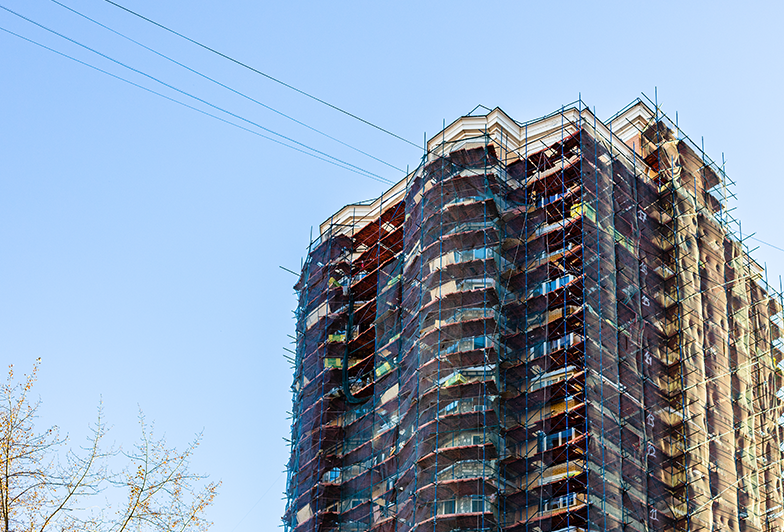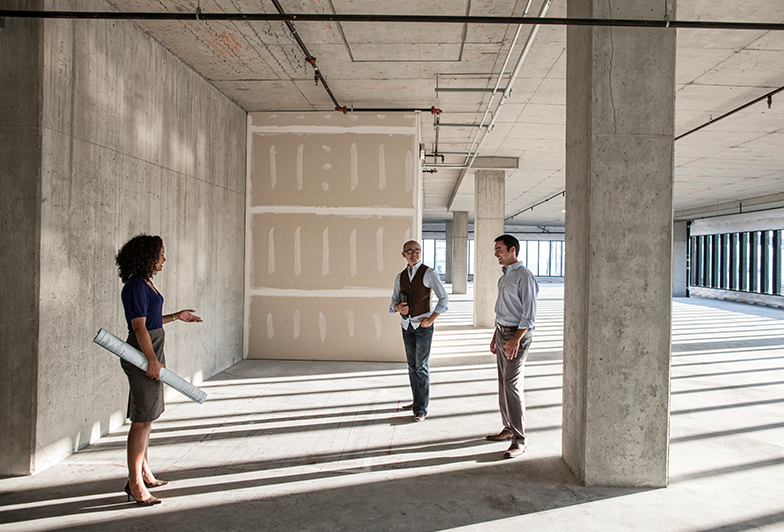Surprising Locations Where Residential Conversions Are Transforming Real Estate
Key Takeaways:
-
Commercial-to-residential conversions are surging, with adaptive reuse projected to create 70,700 apartment units in 2025 to help address the U.S. housing shortage.
-
Repurposing commercial buildings for residential use is nearly 20% cheaper than new construction while also reducing environmental impact.
-
-
Short Notes provide a way to invest in real estate, offering fixed-rate, high-yield returns without the need to own rental property.
The U.S. housing shortage has developers flexing their creative muscles and thinking outside the box. The commercial-to-residential conversion trend (also called adaptive reuse) is forecasted to hit a record high in 2025, a real boon for buyers trying to navigate the challenges of a housing shortage.
We'll discuss the benefits and challenges of repurposing unused commercial spaces as residential spaces, look at unique conversion projects, and discuss how to invest in these opportunities.
According to BisNow, commercial-to-residential conversion will create 70,700 apartment units in 2025. Of the 169,000 units previously created, commercial-to-residential conversions take 42% of the pie.
Advantages of Housing Through Adaptive Reuse
Commercial property conversion to residential spaces offers many advantages. Creative and forward-thinking solutions to the U.S. housing shortage have brought us to the doorstep of an exciting trend of adaptive reuse. Let's consider some of the benefits:
- Housing Supply Increases - Depending on who you ask, the estimated housing shortage is between 1.5 and 5.5 million units. In 105 of America's largest cities, 15% of the commercial office buildings could be used for adaptive reuse, adding 171,470 housing units alone.
- Cost Efficiency - Taking existing buildings and repurposing their spaces lowers costly demolition and disposal of materials. Reusing materials like lumber, tiles, and metal reduces the need to buy new materials. Office-to-residential conversion leans toward being more cost-effective - almost 20% cheaper - than building residential units from scratch.
- Urban Revitalization - Vacant and underutilized buildings quickly contribute to urban decay, but adaptive reuse can breathe new life and new economic activities into these neighborhoods. An excellent example is Philadelphia city, which converted over 8 million square feet of space in over 40 office buildings between 2000 and 2020. The result? A 54% boost in the city center's population.
- Sustainability - Office-to-residential conversion is a sustainable choice that helps decrease the amount of construction materials ending up in landfills and reduces the need for new ones. This has a positive environmental impact and lowers the carbon footprint.

Challenges of Residential Adaptive Reuse Projects
Like all solutions to the housing shortage, commercial property conversion to residential housing projects runs into challenges. While office vacancy rates continue to climb, currently at around 17%, not all commercial spaces are suitable for adaptive reuse.
For example, 3% of office buildings in New York City would meet the conversion criteria; in Denver, it's just 2%. Residential building standards differ widely from commercial ones, and points like ceiling height, floor plate sizes, and window sizes in offices don't meet those standards. The square foot costs in these cases may be significantly higher than makes financial sense.
The location of some of the empty commercial spaces can also present a hurdle for adaptive reuse developers. Empty prisons closer to urban areas have undergone successful conversions, but most correctional centers were built during the last half-century and placed in rural regions with the idea that they would bring jobs to the area. This helped towns prosper while the prisons were operating, but when the facilities closed and the jobs disappeared, the local economy would stall. Developers aren't keen on revitalizing commercial spaces where diverse economic activities don't exist.
Regulatory hurdles are a real struggle for developers, and complex zoning laws, building codes, and preservation policies for historical sites can vary widely in each potential location. Working with local authorities who oversee compliance can be potentially time-consuming and costly.
Unique Residential Conversion Projects
The last half of the 20th century saw a boom in the number of prisons built. From 1970 to 2000, more than 1,000 facilities were built, but by 2010, sentencing reforms and the decriminalization of drugs led to a decrease in the number of prisoners incarcerated. In the 22 years from 2000 to 2022, almost 200 correctional facilities closed.
The empty prisons presented a unique opportunity for adaptive reuse, and some developers successfully converted these facilities into mixed-use spaces that included affordable housing and commercial spaces.
In 2001, Fairfax County, VA, purchased a 2,400-acre prison site that included barracks, a farm, and a training area for trades. After creating green spaces, schools, and an arts center, the county worked with a developer skilled in historic preservation to convert cellblocks into homes, apartments, and commercial spaces.
Other successful prison conversions include the development of a business campus and sports park at the Mid-Orange Correctional Facility site in Warwick, NY, and a planned affordable housing complex called Seneca, where Manhattan's Lincoln Correctional Facility stands.
Investing in Residential Conversions
Is there a housing shortage? Yes, indeed. The answers to "Why is there a housing shortage?" are often complex, but proven and viable solutions include commercial property conversion to residential projects. These spaces are not only good news for those looking for housing that meets their needs but also present opportunities for investors seeking solid ways to diversify their portfolios.
Other incentives for adaptive reuse projects include tax breaks and fast-track permit policies. Adaptive reuse assets are also an extremely effective tool for hedging against economic turmoil.
A building that is repurposed takes on a new purpose, as opposed to one that is upgraded through refurbishing. Investments increase a building's social and environmental value, which in turn increases its asset resilience.
How Short Notes Make Real Estate Investing Accessible
Historically, real estate investing has been considered a solid and relatively low-risk investment. While this type of investment was typically reserved for accredited investors, times have changed, and non-accredited investors have opportunities to add real estate to their portfolios.
One way to do this is through Short Notes, essentially loans to developers needing working capital. Connect Invest Short Notes, with its high-yield, fixed-rate, monthly returns, are used for:
- Financing or refinancing of non-primary residential or income-producing commercial structures
- Acquisition or refinancing of undeveloped land
- Development and construction of residential or commercial projects
- Acquisition of distressed assets from regional banks, the FDIC, and other lenders
The future of Short Notes is bright. As adaptive reuse conversions into residential units rise, Short Notes is expected to begin funding specific conversion projects (converting distressed assets).

In Closing
The move to working from home has resulted in the emptying or downsizing of office spaces. Couple this with increasing demand for housing, positive policy changes, and fewer barriers for all investors interested in real estate, and it is clear that commercial property conversion to residential projects makes sense.
NYC leads in office-to-residential conversion with 8,310 units, and Washington, D.C., is a close second with 6,533 units. Los Angeles takes third with 4,388 units, and investors will keep an eye on other cities like San Francisco as it has updated its building codes and revised its planning code and on Minneapolis, which removed the requirement for public hearings for these projects.
Big office giants like St. Green and GFP Real Estate aren't the only companies looking to make real estate acquisitions. Smaller, everyday investors will also have opportunities to diversify their portfolios through investments in adaptive reuse projects.

